

2024 IMPACT REPORT
Our work has never been more critical—it’s urgent. Rising homelessness, economic instability, and systemic barriers demand immediate action. Every delay leaves more people vulnerable. Now is the time to act, support, and create lasting change.
Laura, homeless in Grants Pass
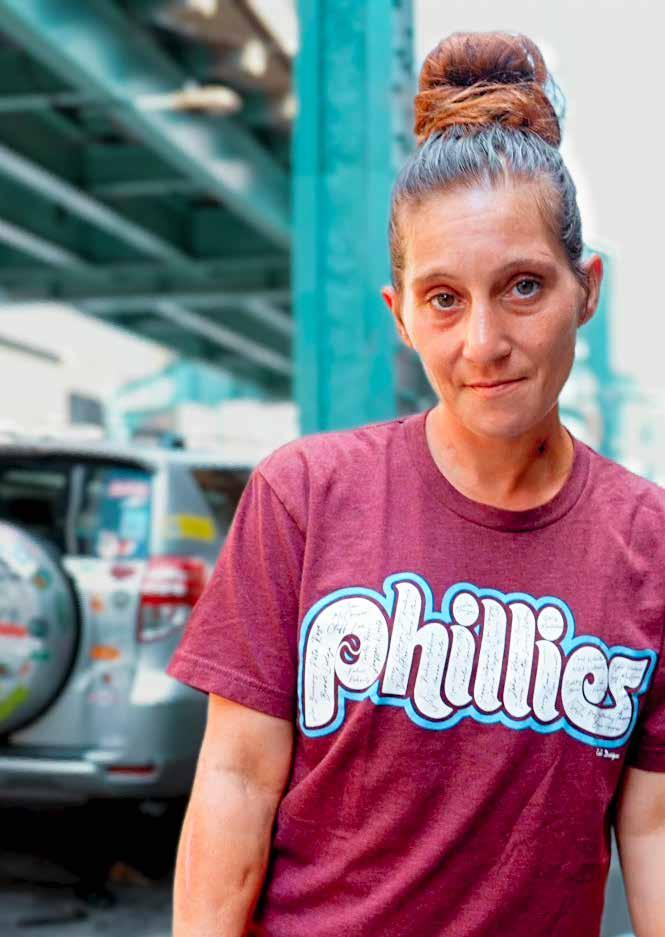
“This job keeps getting harder. Please don’t quit on us. Many of us are homeless due to disability, not substance abuse—just ill and unsupported. We need the hope your work provides, however faint. It says, ‘There could be a light at the end of the tunnel. Hang on.’”
— [TBD]
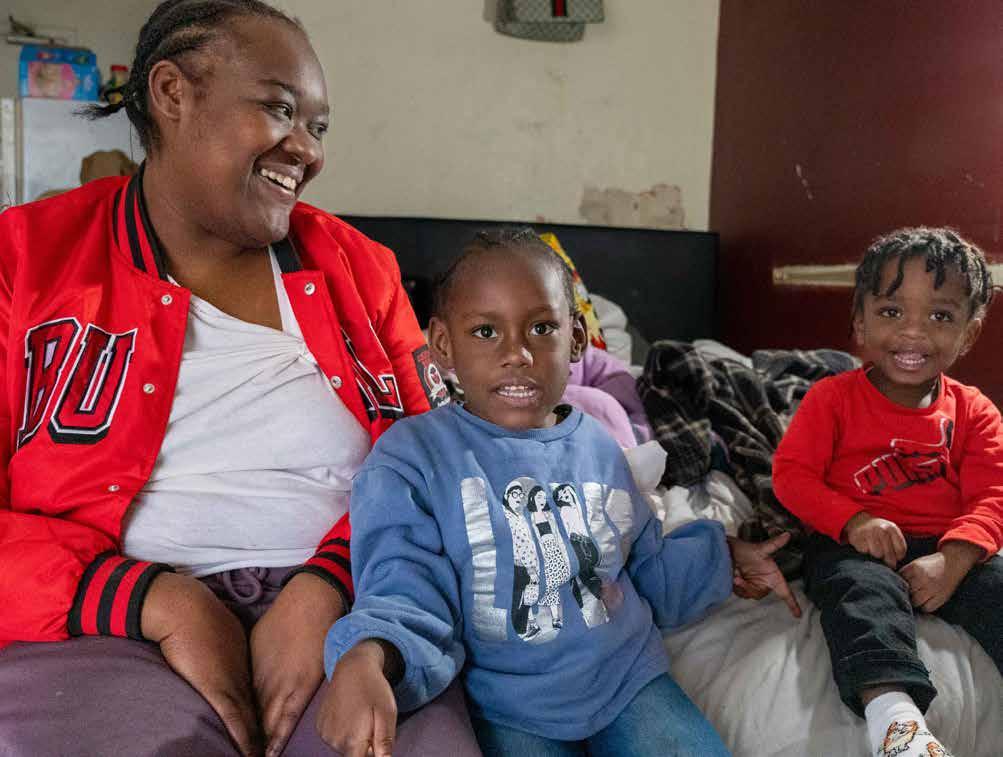
Our work has never been more important—now it’s urgent.
In 2023, our impact report stated: “Our work has never been more important.” In 2024, the growing criminalization of homelessness and the escalating crisis turned that urgency into an emergency.
Since the Supreme Court’s Grants Pass v. Johnson ruling, at least 150 communities have criminalized homelessness , with more following suit. Cities are jailing people or forcing them into rural areas , making it even harder to connect them with housing and services.
At the same time, tech platforms are restricting our reach, and mainstream media is scaling back coverage of homelessness , creating a dangerous void of information.
Despite these mounting challenges, Invisible People fought back . Through journalism, documentaries, and storytelling, we made the truth louder and pushed for real solutions . As you’ll see in this report, 2024 was a year of impact—but the fight is far from over .
Fighting Criminalization Through Storytelling
The criminalization of homelessness has always been a core issue for us, but in 2024, the stakes grew even higher. After the Supreme Court’s Grants Pass v. Johnson decision, cities and states rapidly expanded laws that punish homelessness instead of addressing it. We knew we had to fight back with our most powerful tool: the truth.
We partnered with The New York Times on a groundbreaking video feature about Grants Pass v. Johnson , bringing national attention to the consequences of criminalization. The response was overwhelming— the piece became one of The New York Times’ most-clicked articles that day , generating over 1,000 comments, nearly double the usual engagement.

But we didn’t stop there. To further expose the impact of these harmful policies, we produced a feature documentary on Grants Pass , capturing the human cost of criminalization and how legal battles like this shape the future of homelessness policy nationwide.
We also released the scripted film Displaced , set in Columbia, Missouri, where the Cicero Institute successfully
pushed for state-level criminalization laws. The film follows Ray, a homeless veteran forcibly removed during a sweep , highlighting the devastating impact of punitive policies. Scripted storytelling allows us to create emotional connections with audiences, shifting perceptions in ways traditional advocacy often cannot.
“We used the Hennepin County video to inspire community leaders and providers to come together to create a more systematic and collaborative approach. It confirmed what was possible and demonstrated the impact of authentic, people-centered engagement.”
—Barbara Poppe
While exposing harm is critical, so is highlighting real solutions. That’s why we also produced a documentary on Hennepin County, showcasing how community-wide systems and evidence-based strategies are reducing homelessness. By demonstrating what actually works, we offer a clear alternative to the failed policies of criminalization.
Alongside these major projects, our journalism exposed the rapid spread of criminalization laws nationwide , publishing 90 investigative articles many of which were featured in our daily video news highlights. These efforts ensured that the public, policymakers, and media had access to accurate,
A Game-Changing Collaboration with The New York Times
Late 2023, The New York Times approached us to collaborate on a featured video about the Supreme Court’s Grants Pass v. Johnson case —a project that took over seven months to bring to life. The final video was a tremendous success, but the backstory behind it is just as remarkable.

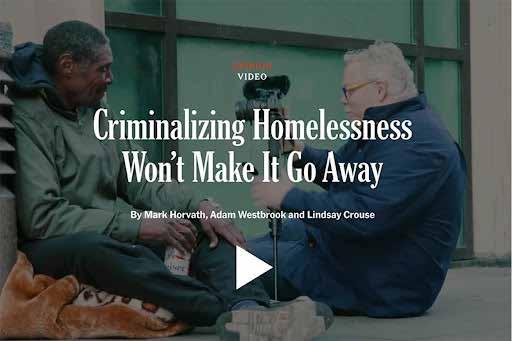
Jonah M. Kessel, Deputy Director of Opinion Video at The New York Times, shared that their staff regularly brings Invisible People videos to their internal “show and tell” meetings for inspiration. This organic recognition led Jonah to reach out, sparking a powerful collaboration that brought national attention to the criminalization of homelessness.

“We’re really happy with how the film was received. There are 1,000 + comments on the NYT page, about 2x what we would normally expect for a video and it was one of the most clicked on articles that day. Lots of people really engaging with the issue which is always a success. “
— Quote from NYT
Adapting to a Changing Digital Landscape
In 2024, we faced a new challenge that made our work even harder : platform restrictions and digital privacy changes. Google, Apple, and other tech companies implemented updates that limited our ability to track audience engagement , making it appear as though our reach had declined—when in reality, it remained strong.
Even more damaging, Meta classified homelessness as “political speech,” actively suppressing our content on Instagram and Facebook for over 90 days.
This decision drastically reduced our ability to reach, educate, and mobilize audiences at a time when misinformation about homelessness was at an all-time high.
Despite these roadblocks, our impact did not slow down . We adapted by expanding our presence on multiple platforms, increasing our focus on video storytelling and investigative journalism, and finding new ways to engage audiences. Our work continues to cut through the noise , ensuring that truthbased narratives reach the public—no matter the barriers put in our way.

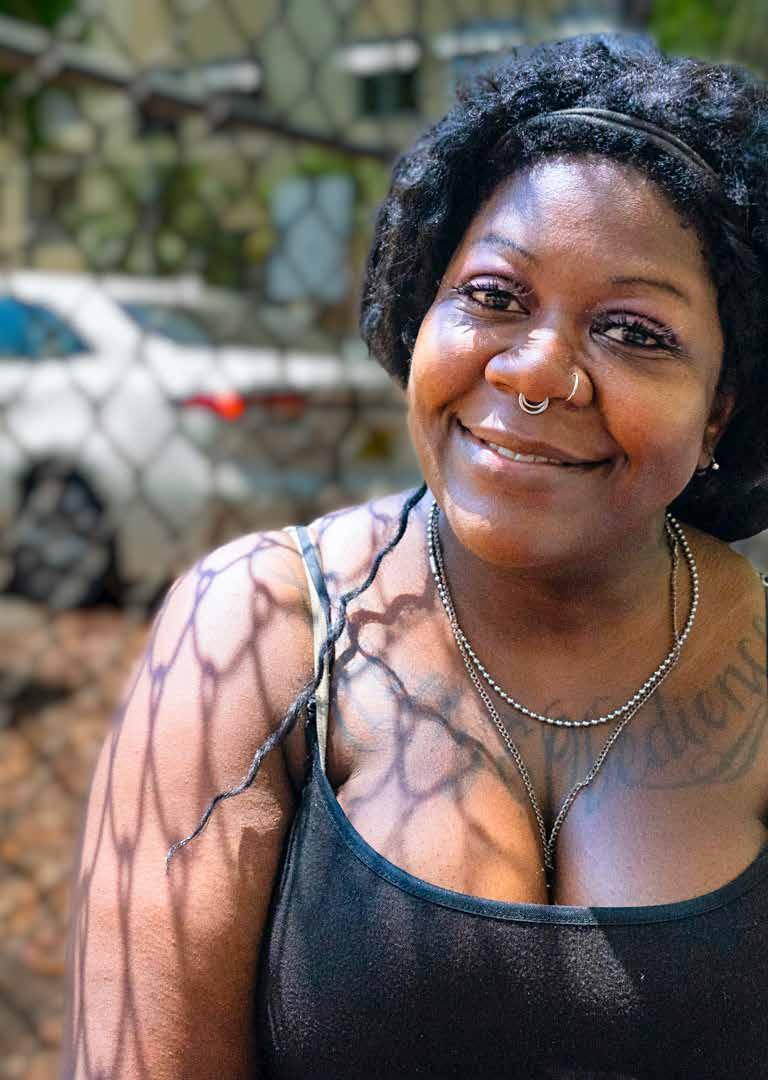
“You have opened my eyes to the problem of homelessness. I now can appreciate what they’re going through, and have become more understanding. I’ll buy people food or give some money when I can. It’s never going to be enough, but if I can be moved then anyone can. You are doing great work here.”
— [TBD]
The Numbers: 2024 Impact Metrics
�� Overall Impact:
�� Total Impressions: 148,950,435
�� Total Engagement: 13,134,649
�� YouTube
�� 2024 Views: 10,105,556
Total Views: 312,657,026
Podcast Views: 124,964
⏳ Watch Time: 14,850 hours
Videos Added: 182
�� Social Media Reach
Instagram:
�� 27,192,641 Impressions
❤ 1,729,608 Engagement
638 Videos, 360 Photos
Facebook:
�� 97,960,327 Impressions
�� 7,517,130 Engagement
362 Videos, 51 Photos
X (Twitter):
�� 5,283,880 Impressions
�� 200,415 Engagement
537 Videos, 2,027 Photos
TikTok :
�� 6,315,368 Views
❤ 228,920 Engagement
�� 243 Videos
Journalism & News
✍ Articles Published: 346 posts
(69 lived experience, 90 criminalization)
NewsBreak:
�� 1,102,124 Impressions
�� 57,614 Views
Apple News:
�� 236,350 Impressions
�� 31,577 Views
�� Podcast Impact
�� Episodes Released: 20
�� Audio Subscribers: 1,164
▶ Total Plays: 13,437
�� Video & Film Production
�� Documentaries: 7
�� Scripted Films: 1
�� Advocacy & Impact
✉ Emails Sent to Legislators: 3,012
�� Money Given to Homeless Individuals: $54,749
1,162,978 YOUTUBE SUBSCRIBERS *
464,383 INSTAGRAM FOLLOWERS *
110,512 TIKTOK FOLLOWERS *
750,726 FACEBOOK FOLLOWERS * * Current Audience as of February 18, 2024
Solving Homelessness Requires Everyone’s Support
In today’s diverse communication environment, we adopt a multi-channel strategy, tailoring various types of content to meet different demographics right where they are.

Spotlight: Solutions and Success Stories
“Displaced” takes viewers to Columbia, Missouri, where Ray, a homeless veteran, struggles under a new state law that criminalizes homelessness. The film starts with a poignant scene of Ray being displaced during a sweep, an action now legitimized by state legislation. As Ray scrambles to salvage his belongings, the documentary underscores the harsh measures of this law, showing sanitation workers and law enforcement in action.
The narrative exposes the flawed approach of penalizing homelessness instead of addressing its root causes like poverty and inadequate housing. Ray’s interactions with city officials, police, and other homeless people reveal a system more focused on criminalizing the vulnerable than helping them.

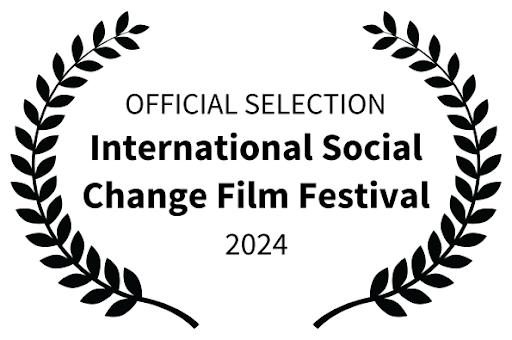

New Initiatives & Innovations
Launching a Messaging Toolkit to Reach Different Demographics
Our commitment to shifting public perception through research began in 2020 with What America Believes About Homelessness and continued in 2021 with Barriers to Progress . Since 2022, we’ve been developing a messaging toolkit to help nonprofits, politicians, and advocates communicate effectively across demographics.
Progress was slow—not due to a lack of urgency, but because we needed the right partners and we operate on a limited budget , ensuring every dollar drives impact.
In 2024, we conducted a comprehensive research survey to refine this toolkit , marking a major milestone in this year’s impact report. By collaborating with consumer marketing experts, we’ve created a resource that is practical, datadriven, and built for real-world impact. As we move into 2025, this toolkit will be a critical tool for r eshaping narratives, improving public understanding, and driving policy change

Expanding Our Reach Through Multi-Channel Storytelling
We know that different audiences consume information in different ways.
To meet people where they are, we expanded our multi-channel storytelling strategy, using journalism, documentary films, video, and podcasts to amplify the most important stories of our time.
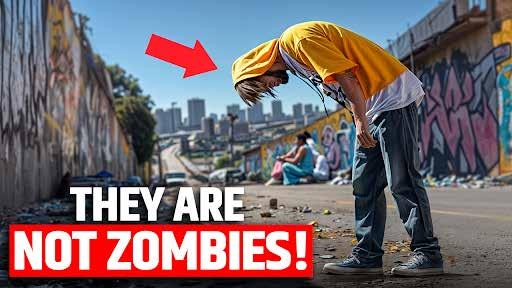

Homeless to Homeowner: The Kensington They Don’t Show You
They’re Not Zombies—They’re Humans Fighting to Survive Kensington, Philadelphia
Countering Harmful Narratives: Kensington, Philadelphia
Kensington, Philadelphia, is often exploited by YouTubers and TikTokers who profit from sensationalized content about addiction and homelessness. In response, we went there to tell a different story—one based on humanity, dignity, and real solutions.
We produced two documentaries that humanized people struggling with addiction and highlighted the organizations working to get them off the streets. Our reporting also exposed the crisis of unnecessary amputations among homeless drug users, resulting in a three-part investigative series and two podcast episodes diving deeper into the issue.

23 and Amputated: Ignorance in Treating Kensington’s Homeless Drug Users
By covering Kensington across multiple formats, we reached different audiences, reshaped perceptions, and countered the dangerous narratives pushed by viral misinformation.
Podcasting: YouTube Moves to the Living Room
A major shift in 2024 was that YouTube became the most-watched app on television screens , surpassing Netflix and Disney. 40% of our views now come from TVs , marking a massive opportunity to change the narrative on homelessness in a more immersive way.
We have been preparing for this shift for years. Our documentaries and scripted films were designed to be viewed in living rooms , where audiences engage more deeply with content. This validates our long-term strategy— creating powerful, long-form storytelling that influences public perception and policy

To further capitalize on this shift, we launched a video podcast , leveraging YouTube’s dominance as the #1 podcasting platform. Our episode Love & Disruption: Advancing Housing Justice reached the Top 10 video podcasts on Spotify for a day , an incredible

achievement that proves the demand for thoughtful, in-depth conversations on homelessness and housing justice. This moment reaffirmed the power of longform storytelling to engage audiences and drive real change.

Filling the Void: The Critical Role of Our Journalism
As legacy media declines , layoffs and shrinking newsrooms have drastically reduced coverage of issues like homelessness, criminalization, and poverty. With fewer reporters covering these topics, Invisible People is stepping up to fill this critical gap ensuring the public gets the information needed to drive policy change.
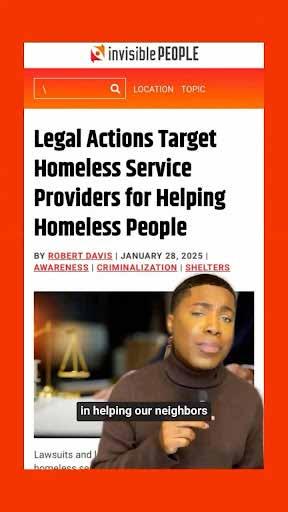

From Text to Video: Expanding Our News Reach
For the fifth year in a row, TikTok remains the fastest-growing news source in America , reinforcing that video is the most effective way to reach people. Recognizing this, we launched a weekly video newsreel in 2023 , hosted by Gen Z journalists, to educate younger audiences about homelessness and related issues.
In 2024, our journalism expanded thanks to our dedicated writers, producing 346 total articles , including 69 stories from people with lived experience and 90 pieces exposing the harms of criminalization . While traditional media pulls back, we remain committed to reporting the truth and influencing the narrative where it matters most.


In 2024, we expanded this effort, turning the weekly newsreel into a three-timesa-week format , with plans to scale to daily news updates, interviews, and more video-driven journalism. By shifting our reporting into video, we’re ensuring that critical stories on homelessness reach younger audiences where they are—and drive real impact.
Shaping
the Narrative Through SEO
One of the most powerful yet overlooked ways we shape public perception is through search dominance. Invisible People consistently ranks ahead of major media on homelessness-related topics , ensuring our stories—not harmful narratives—are seen first.
While SEO isn’t obvious, its impact is huge. Our content attracts more traffic than traditional news, driving engagement with fact-based, solutionsdriven storytelling. As mainstream media cuts back on homelessness coverage, our ability to lead the conversation through search rankings becomes even more critical

Helping Wendell & Changing Lives
In 2024, the USC Street Medicine team asked us to help Wendell, an 82-yearold homeless man living in a brokendown RV. With no housing available, we created a video and launched a GoFundMe, raising over $53,000 .
Wendell bought a reliable RV, another for a woman in a tent, and helped a third woman move into a van. We also helped three homeless families in New Jersey raise funds during the holidays, proving the power of storytelling in driving real change

A Quiet but Powerful Impact: Peer Support for Thousands
While our focus is on narrative change, one of our most significant programs is our online peer support group , where over 2,000 homeless and formerly
homeless people connect, share resources, and help each other. We don’t often highlight this direct support, but the impact is undeniable—this community provides critical guidance, encouragement, and solidarity for those navigating homelessness.

Bringing Criminalization to Life Through VR
Before COVID, we partnered with Meta on a virtual reality film about the criminalization of homelessness, featuring homeless and formerly homeless actors. When the film was released, the pandemic prevented shared headset use, leaving it largely unseen.
In 2024, we finally premiered it at the National Alliance to End Homelessness Conference in D.C., where attendees experienced it firsthand. The activation was a huge success, immersing people in the reality of a police sweep on a tent encampment—shifting perceptions and driving change.
To deepen the impact, we hired a homeless woman to manage the booth and schedule sessions, reinforcing the importance of inclusion and economic opportunity in the movement to end homelessness.

Looking Ahead: Strengthening Our Impact in 2025
The fight against homelessness criminalization is only getting more intense, but we are more focused and strategic than ever in countering harmful policies and pushing for real solutions.
Our 2025 Priorities:
Journalism – Expanding our text-based and video reporting to cover the latest in criminalization, policy, and solutions.
Documentary Storytelling – Exposing the failures of criminalization while also showcasing success stories that prove preventing and ending homelessness is possible.
Podcasts & Long-Form Video –Reaching new audiences in the growing video-on-TV space, where deep storytelling can create lasting impact.
Impact Campaigns – Ensuring our stories don’t just inform but lead to real change.
With support from Melville Charitable Trust, we will produce impact campaigns alongside our multimedia content, ensuring that every story we tell drives action.
We will also continue seeking partners like the Corporation for Supportive Housing to amplify solutions—such as our upcoming documentary on prison reentry into supportive housing.
Since 2008, we’ve been leading narrative change work—long before most organizations recognized its power. We’ve built an audience for this moment, and by focusing on our core programs while integrating impact campaigns, we are stronger, more adaptable, and better positioned than ever to shape public perception and policy.
Invisible People remains the best investment in narrative change.
Invisible People’s vital work is made possible thanks to the generous support of thousands of individual donors and the following foundations:
Melville Charitable Trust Fund for Housing and Opportunity
Oak Foundation / National Homelessness Law Center
Flora Family Foundation
The JMS Foundation

“Never doubt that a small group of thoughtful, committed citizens can change the world; indeed, it’s the only thing that ever has.”
— Margaret Mead
We are deeply thankful for our community of followers, partners, our dedicated team, and our generous donors. Most importantly, we honor those who have experienced homelessness, whose voices guide our mission. As we enter 2025, the crisis is deepening—criminalization is escalating, and misinformation is spreading faster than ever.
Yet, Invisible People remains a powerful force for change, ensuring the public and policymakers see the truth. With your support, we will continue to challenge harmful narratives, amplify real solutions, and push for policies that end homelessness for good.


invisiblepeople.tv | info@invisiblepeople.tv
